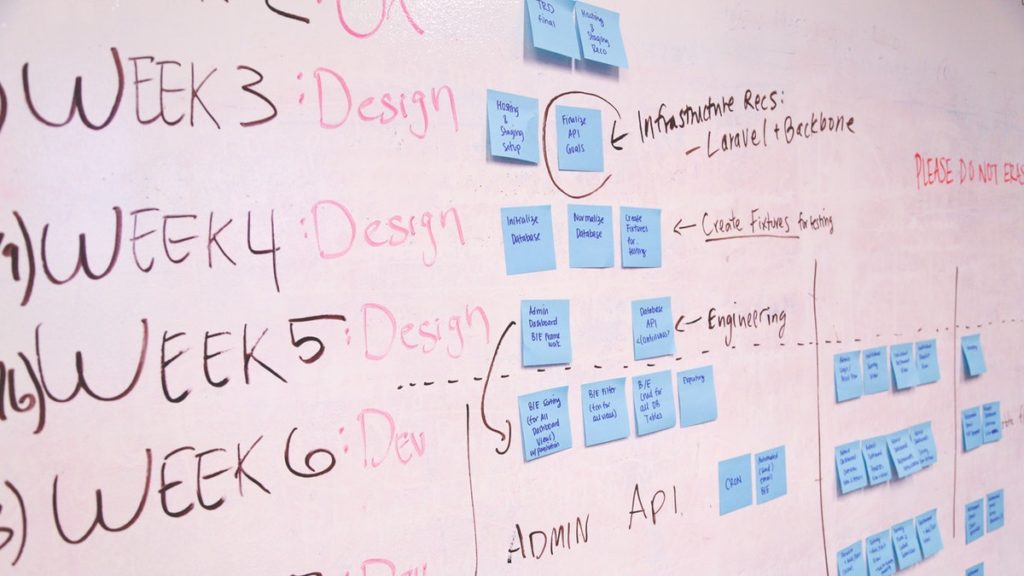The project management process for IT projects is quite different from that of other types of projects. Here, we outline distinctions in terms of time, budget, and resources.
Every project, whether IT or non-IT, follows a life cycle. The life cycle is composed of the different phases of the project itself, from start to finish.
Without a proper process in place, the probability of reaching the final phase is significantly low. This process is known as project management. While project management is a difficult skill to master, it is very much worth learning.
Moreover, for IT projects, mastery is necessary. This mastery includes a host of skills.
Project management allows teams to organize and tame the chaos. A clear path is mapped out from the start to ensure that the outcome meets or surpasses the goals. Project management also allows you to establish a schedule. Also, it encourages teamwork and helps maximize the resources available. Other benefits of implementing a process include cost and quality management.
However, the management process for IT and non-IT projects is quite different. Here, we outline those distinctions in terms of time, budget, and resources, along with a couple of examples.
Team Location and IT Projects
Let’s consider a simple non-IT project such as bridge construction. Like any other job, the lead supervises and manages the team. Good supervision ensures that the bridge is constructed within a specific time frame. However, for the construction to be successfully executed, the team has to be in one place, which is at the construction site.
With IT projects, a specific location is not mandatory. For example, a recent study conducted by Owl Labs in 2019 showed that more than 16% of all companies hire only remote teams.
Similarly, another study showed that within the IT industry at least 70% of people who work remotely. The frequency of working remotely in that study was at least once a week, all over the globe.
With more businesses looking for talent, building and managing a remote team in another country is no longer an uncommon phenomenon.

And because IT projects can be handled remotely, setting up management systems exclusively on-premises is becoming obsolete. It can also lead to an unnecessary increase in the budget. So instead of using on-premises systems, leads or managers use cloud-based management.
Not unlike a traditional system, however, a cloud-based system also uses planning, collaborating, monitoring, and delivery tools. The only difference is that all these tools are online. Some other tools include fully integrated task-tracking tools, dashboards, and task management Kanban boards. Each of these tools can be customized for your business needs.
Timelines
A survey conducted by Innotas showed that 55% of the IT professionals interviewed indicated that their IT development was a failure. They cited lack of time, budget, or resources as the causes. Most also blame poor planning as the primary reason behind this failure. However, many unpredictable circumstances can also make the timelines of an IT project unpredictable.
For instance, sometimes, companies don’t do an in-depth feasibility test. Others neglect to give much thought to the logistics of a particular IT project. This can cause unrealistically optimistic expectations regarding timelines.
For instance, consider an IT project that involves building an entire ERP solution from scratch. Though the manager determines a precise schedule, chances are it’s not going to work out according to the manager’s plan.
The explanation for this is quite simple. There are too many human and technology variables that influence the timeline of an IT project. For example, translation of the website can take a week longer than expected. Then web design can go to five drafts instead of three. Additionally, there could be an unexpected platform or server update that is incompatible with the source code. You never really know.
RELATED CONTENT: THE IMPORTANCE OF PLANNING IN PROJECT MANAGEMENT
On the other hand, consider a manufacturing project such as a CNC machining serial production job. This process is quite simple. CAD/CAM files are automated, and the number of pieces produced simply determines the machining process time. There are no unexpected factors in play in a typical non-IT project.
Flexibility
Flexibility allows managers to organize workloads and resources more consistently. They can spread out all the workload peaks and troughs to organize the project schedule. The focus is to schedule in such a way that no two tasks overlap each other.
Sometimes, however, managers also find themselves managing more than two IT projects at the same time. Often, this is by design rather than for convenience. On one side of the equation, the more projects a business can run, the faster they can grow. On the other hand, too much speed can lead to chaos. However, if allowed more flexibility in their schedules, managers can organize their IT projects in better ways.

In contrast, non-IT projects such as building an airplane require undivided attention and expertise. These cannot be done alongside other jobs.
IT Project Maintenance
Even after successfully executing an IT project, a common risk remains, especially in long-term development projects. That risk is technical difficulties. Software integration, compliance, data security, large-scale system implementation, and information privacy are some areas where managers are likely to run into unpredictable problems.
In such scenarios, risk management plays a crucial role. Identifying the risks and their effects on the project becomes the highest priority.
Commonly, maintenance of IT projects is intended to minimize risk to the greatest extent possible. This involves transferring the risk to an external party, avoiding it entirely, financing it, or accepting it.
To this end, developing the right strategies will help manage risks to an acceptable level. This is where the manager can simply update, redesign, or maintain work from a remote location for a monthly fee. In other words, the manager does not have to be physically present at the location. Therefore, the project requires fewer resources and less time.
On the other hand, if a bridge requires repairs, then that is a whole new process in itself. This requires the presence and expertise of the manager. It also requires a significant amount of money and other resources.
These are a few of the many major differences between an IT project and a non-IT project from the managerial perspective.

